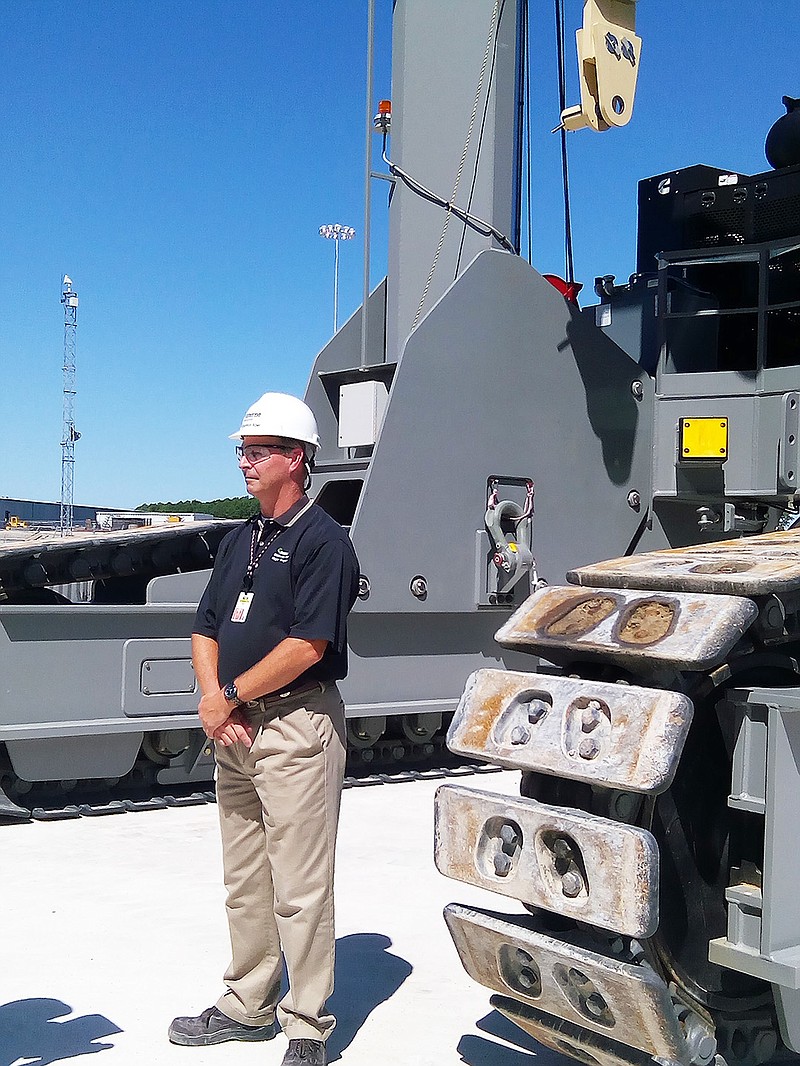Ameren Missouri has wrapped up construction on its new dry cask storage facility and will move spent fuel from the fuel pool for storage in the new system this week.
The system, which has taken the company four years to complete, is to provide additional storage for spent fuel outside of the fuel pool. The storage facility is capable of storing 48 canisters of spent fuel assemblies, which are comprised of fuel rods containing uranium pellets (about the size of a multi-vitamin). Each assembly can contain 144 fuel rods - each canister will be able to hold 37 spent fuel assemblies. It only takes five of the pellets to provide electricity to a home for a year.
A cask storage facility is paid for by the company's investment into the U.S. Department of Energy's contractual obligation for the construction of a national repository, Strategic Communications Advisor Anne Roselius said, however Ameren personnel were not allowed to further discuss matters of the project's budget. The Nuclear Waste Policy Act of 1982 requires the DOE to construct a national storage facility for spent fuel, however, the DOE has yet to move forward with developing such a facility. The cask system will be used as a permanent storage facility until a national repository is established.
"This is the safest and best route to store the fuel until a national repository is established," Roselius said.
Holtec International, which was the general contractor for the dry cask repository, submitted the building plans to the U.S. Nuclear Regulatory Commission (NCR) for approval. Once the NRC approved the design it issued a certificate of compliance to begin construction. The original license for the dry cask system would end in 2024, but a 20-year life extension on the license will keep the facility open to 2044, Shannon Abel, the director of engineering projects, said. If Ameren had not made a move to begin construction on the dry cask system, the fuel pool would be filled to capacity by 2020, Abel said. The cask system will keep the plant operational.
"We wouldn't be able to run without this storage system," Abel added.
There are 99 other nuclear power plants in the U.S. all of which already have implemented a dry cask storage system. The difference between Callaway's repository and facilities throughout the country is that Ameren Missouri has gone underground to store its spent fuel.
The full canisters are placed in Underground Maximum (UMAX) storage, which has a top and bottom pad made of concrete 33 inches thick and 17 feet of concrete is placed between each pad. Each canister is also completely welded shut so air inside the canister is not released into the environment. In order to keep the temperature of the canister stabilized, a natural convection ventilation system brings cooler air into the chamber to surround the canister and pushes the warm air out through the top. This method of storing the spent fuel serves to shield employees from radiation and makes it easier for Ameren to defend for security purposes, Abel said.
"In order to store below the grid you have to have the right environmental conditions," Abel added.
With the underground system Ameren Missouri employees will only be exposed to 0.2 millirem per hour - that's less than a single dental x-ray, which produces 0.5 millirem of radiation each time. However, this isn't any less exposure than the employees have to the plant's fuel pool.
"Safety is our number one priority," Barry Cox, the senior director nuclear operations, said. "This is just another measure to make sure the public remains safe."
During the process the canister is filled with spent fuel from the fuel pool using a hook mechanism. The hook relies on a variable elevation cask staging platform to prevent the hook from being damaged in the spent fuel pool water. Once the canister is filled, it is then transported from the pool facility using a HI-PORT transport machine. Then the vertical cask transporter, which is too tall to fit into the pool facility carries the cask to the preparation building where a lid will be welded onto the canister. It will then be transported back to the UMAX pad for storage.
This process is called a campaign and will only occur every three years. During each campaign Ameren Missouri will fill six canisters with fuel from the spent fuel pool, which is a total of 222 fuel assemblies. New spent fuel will be stored in the pool for a minimum of five years before it will be able to be transported into the canisters. The dry cask storage has enough space to store canisters from 24 campaign years for a total of 1776 spent fuel assemblies.
Ameren Missouri is hoping a national repository is completed before the dry cask system is full, but the plant has enough room for additional UMAX storage if the need arises.

